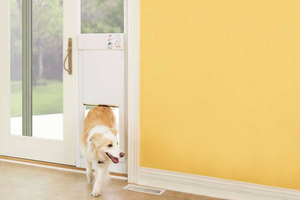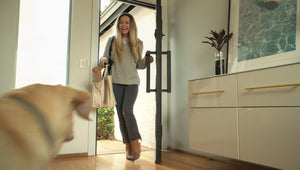Pets and Autism: Can They Make the Difference?
The month of April is Autism Awareness Month. Autism Spectrum Disorder (ASD) includes a range of conditions that are characterized by varying degrees of challenges with everyday life. These many types of autism may exhibit through difficulty with social skills, speech and nonverbal behavior, repetitive behaviors, or through unique strengths. We know from different studies of human behavior that the presence of animals helps break down social barriers among strangers. How do the many benefits of dogs and pets improve social skills with those who struggle with ASD?
Autistic Children in the Classroom

Typical classroom environments often leave children with ASD to struggle to fit in with their peers and leave the parents of children with ASD overwhelmed. Social isolation sometimes leads to bullying and excessive stress for the child, which can then lead to poor academic performance or problematic behaviors. Animals in the classroom and pet ownership for children with ASD can turn these situations around and bring positive effects! Interacting with a pet can improve empathy and social behavior in children with ASD. This increases the instances of these children taking the first steps towards interacting with their classmates. Animals and therapy dogs also open up social barriers for many kids in classroom environments, providing an easier opening to engage with others and make best friends. According to a study that compared children with Autism in the presence of animals instead of toys, having two guinea pigs to play with increased social approach behaviors and prosocial behaviors [1]. In other words, these children were more likely to talk, look at other faces, smile and laugh than the children who only played with toys.
Pets in Everyday Life
Studies on human-animal interaction have shown that simply walking with a dog versus walking alone will increase the amount of interactions you have with strangers. Dogs simply make people more approachable, whether it be a conversation starter or simply a love for those furry faces. One study has shown that even when a well dressed man vs a scruffy dressed man walked the same dog, the greatest difference was not between what the man looked like but in whether or not the companion animal was present [2].

Personally, our PetDoors staff can vouch for animals increasing social interaction! Animals have been referred to as a "social lubricant," opening up doors for conversation and mutual interest. People often borrow Mikey or Loki for social outings; it usually takes longer to get to places with pup in tow after pausing for lots of puppy related conversation! Of course, if someone has a service dog, this is an annoying obstacle when getting from place to place (if you see a working service dog, please simply ignore the dog and let it do its job). However, it is undeniable that dogs and other animals are natural experts at socializing with humans and being great at decreasing stress levels.
Service Dogs
Service dogs are amazingly trained dogs and save lives daily. What is a service dog, you may be asking. A service dog refers to any dog that is trained to help a person with a disability, such as blindness, deafness, mental illness, and other disorders or health concerns. There are many reasons to have a service dog by their side; the emotional and physical benefits of service animals can be even stronger than having another person by their side. Dogs trained to help children with Autism provide both a physical safety and aid in emotional well-being. For example, when running away is an issue, being tethered to a service dog allows the child to experience more freedom while helping parents breathe more calmly knowing their child is in the dog's care. Having a dog with them can reduce, if not eliminate, emotional outbursts, enabling the child to participate more fully in school and other activities. The addition of an animal to the home and classroom has been connected to increases in mood and overall well-being for both those with ASD and others around them. The use of animals in all types of therapy is becoming more common and has had great success in reducing the problematic behaviors often associated with ASD reduces stress for everyone. Pets can have so many positive impacts on our lives. Here are some animal rights organizations that you can get involved with to be a positive impact for them!- O’Haire, Marguerite E. et al. “Social Behaviors Increase in Children with Autism in the Presence of Animals Compared to Toys.” Ed. Vincent M. Reid. PLoS ONE 8.2 (2013): e57010. PMC. Web. 9 Apr. 2017.
- McNicholas J, Collis GM (2000) Dogs as catalysts for social interaction: Robustness of the effect. Br J Psychol 91: 61–70




